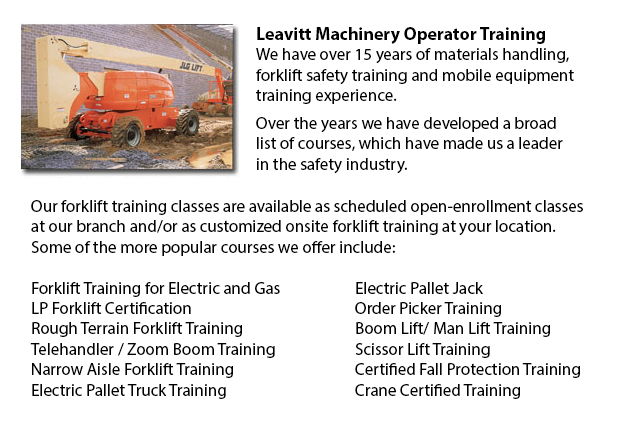
Kitchener Boom Lift Certification - Elevated work platforms allow maintenance operations and work to be carried out at heights that could not be reached by whatever other way. Boom Lift Certification Training educates workers about safely operating scissor lifts and boom lifts.
When work platforms are operated unsafely, they have the potential for serious injury and even death, regardless of their lift style, application or the site conditions. Falls, electrocution, crushed body parts, and tip-overs can be the terrible result of incorrect operating procedures.
To be able to avoid aerial lift incidents, individuals must be qualified to be able to train workers in operating the certain type of aerial lift they will be utilizing. Controls must be easily accessible beside or in the platform of boom lifts used for carrying workers. Aerial lifts must never be modified without the express permission of the manufacturer or other recognized entity. If you are leasing a lift, make certain that it is properly maintained. Prior to utilizing, controls and safety devices must be checked to make sure they are working correctly.
Operational safety procedures are important in avoiding incidents. Operators must not drive an aerial lift with an extended lift (even if a few are designed to be driven with the lift extended). Set outriggers, if available. Always set brakes. Avoid slopes, but when necessary use wheel chocks on slopes which do not go over the slope restrictions of the manufacturer. Follow manufacturer's weight and load restrictions. When standing on the platform of boom lifts, use full-body harnesses or a safety belt with a two-foot lanyard tied to the boom or basket. Fall protection is not needed for scissor lifts that have guardrails. Do not sit or climb on guardrails.
This course includes the following topics: training and certification; safety tips in order to prevent a tip-over; surface conditions and slopes; inspecting the work area & travel path; other guidelines for maintaining stability; stability factors; leverage; weight capacity; pre-operational check; testing control functions; mounting a vehicle; safe operating practices; power lines and overhead obstacles; safe driving procedures; PPE and fall protection; use of lanyards and harness; and preventing falls from platforms.
The successful trainee will become familiar with the following: pre-operational inspection procedures; authorization and training procedures; how to prevent tip-overs; factors affecting the stability of scissor and boom lifts; how to utilize PPE, how to use the testing control functions and fall prevention strategies.
-
Kitchener Forklift Training Schools
Kitchener Forklift Training Schools - The Advantages Of Taking One Of Our Forklift Training Schools Are you searching for work as a driver of a forklift? Our regulatory-compliant mobile equipment operator training offers instruction in types of fo... More -
Kitchener Overhead Crane Operator Training
Kitchener Overhead Crane Operator Training - Our overhead crane operator training course is designed to teach employees the basics of overhead crane/sling operation and pre-shift checks. Courses are taught by our expert trainers and consultants. Well... More -
Kitchener Crane Training School
Kitchener Crane Training School - The crane training school offers industry-relevant programs. Courses provide trainees with learning outcomes which match present industry demands. Our small class sizes combine hands-on experience and theory. Our qua... More -
Kitchener Skid Steer Ticket
Kitchener Skid Steer Ticket - The lift arms on the skid-steer loader are located at the side of the driver along with pivots behind the driver's shoulders. These features makes the skid-steer loader different as opposed to the conventional front load... More -
Kitchener Manlift Operator Certification
Kitchener Manlift Operator Certification - Our scissor platform and aerial lift training and certification empowers participants with a knowledge and general understanding of the efficient and safe use of "Power Operated Mobile Work Platforms," under... More -
Kitchener Crane Safety Training
Kitchener Crane Safety Training - Companies and crane operators have to be aware of the problems related to crane safety. Legislation provides rules for the safe operation, inspection and maintenance of lifting machines all around North America. Cran... More -
Kitchener Forklift Training Programs
Kitchener Forklift Training Programs - Are you searching for work as a forklift driver? Our regulatory-compliant mobile equipment operator training offers instruction in kinds of forklifts, pre-shift check, fuel kinds and dealing with fuels, and safe... More -
Telehandler Training in Kitchener
Telescopic handlers often known as telehandlers for short, are an extremely popular piece of heavy construction machinery. They are commonly used in the construction and agricultural industries. These equipments have extreme reaching ability and can... More

Forklift Certification Kitchener
TOLL FREE: 1-888-254-6157
Kitchener, Ontario
forkliftcertificationkitchener.com
Email Us
About Us


